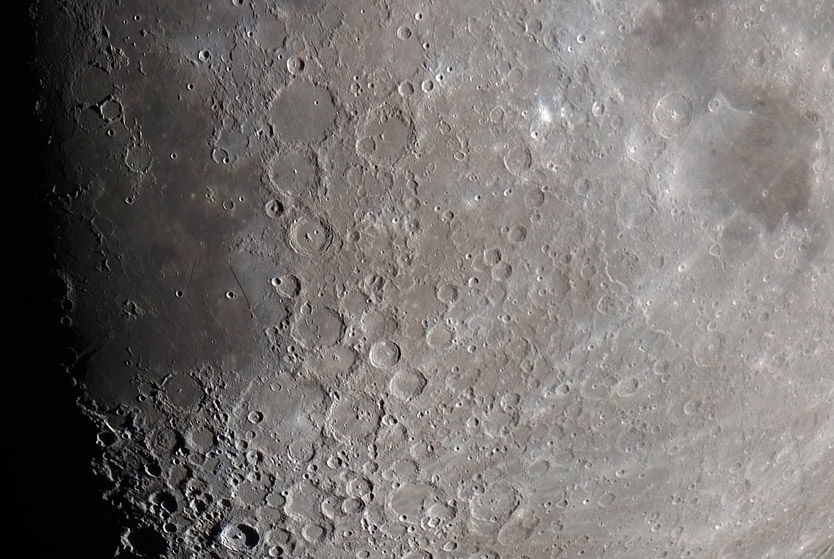
image by Dominique “Dodi” Dierick, Belgium
Color enhanced images of the Moon show much variation in the hues of mare lavas, especially around Mare Serenitatis and within Mare Imbrium. But the highlands are less flamboyant in their subtle colorations. Dodi’s lovely mosaic - here in reduced area and resolution compared to the spectacular original - shows that the southern highlands are largely mixes of milkiness for Tycho’s rays and a washed and rusty pink. The variation in mare colors is due to the large differences in titanium abundances in lunar basslts - much more than is common in terrestrial ones. Highland rocks have very little titanium and iron - they sank toward the core when the magma ocean existed - so they are monotonous in their pinkiness (except for one or two small surprises). There must be differences in the composition of different parts of the highlands but so far imaging has had little success in finding them.
Technical Details:
29 Nov 2006. 110 mm FLT Williams Optics telescope + DMK 41AF02 monochrome camera + Canon 20D reflex for color.
Related Links:
Dodi’s twilight zone of photography
Christmas is coming - consider leaving a list of lunar books on top of a spouse’s pillow - just make sure you include the LPOD URL so that you support LPOD when buying lunar books (or ANY book) from Amazon!
COMMENTS?
Register, and click on the Discussion tab at the top of the page.



